Knitting From Stash: Shawl Design Using Three Skeins of Sport Weight Yarn
Being a knitter since childhood, you can imagine my stash falls in the category of Stash Aquisition Beyond Lifetime Expectancy (also called the SABLE issue). Or, put it this way: I have so much yarn I could supply a major knitting group and still have a wardrobe full of it. Knitting from stash was one of my new year resolutions, so here we go: Let’s dive into our stashes and design shawls from our stash together!
Being a designer for so many years I can’t even imagine knitting patterns made by others anymore – except for sweaters and cardigans, as I still have to learn more abut their construction to be able to design such items myself. So whenever I browse my stash looking for inspiration for my next design project, I find another treasure just waiting to be turned into a shawl.
Looking at my stash planning the shawl celebrating 5000 members in our Facebook group Shawl Knitting, three skeins of sport weight yarn caught my attention: GGH Merino Soft in a lovely shade of gray; colorway #14.
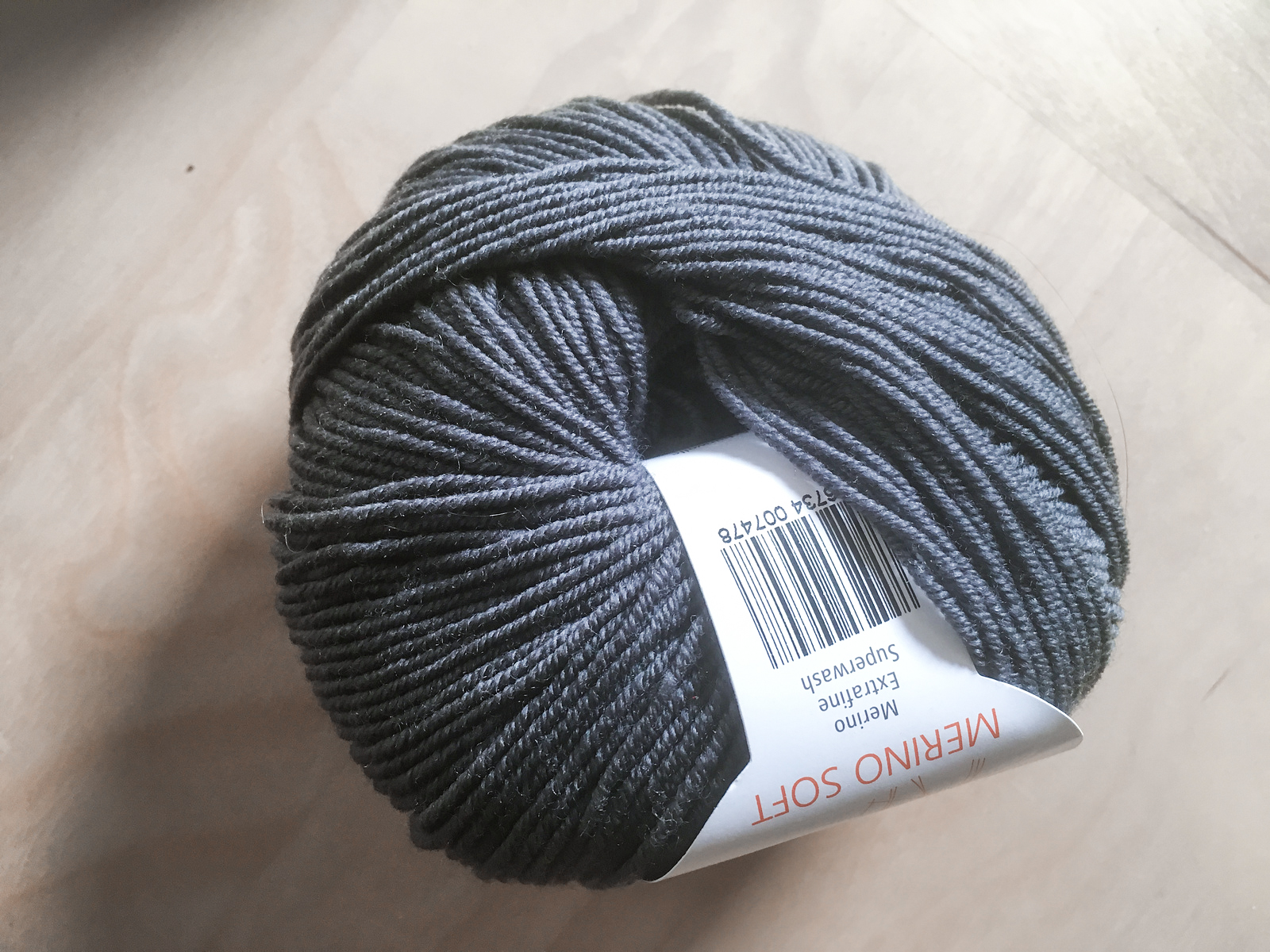
Designing shawls with limited yarn supply is always a challenge. The last thing you want to experience is running out of yarn before you finish your project. The best approach here is to use adjustable shawl construction methods, like triangles worked sideways or Austrian crescents.
Designing Shawls Based on Yarn
I decided to create a design using the framework of a triangle worked sideways. The master plan was to create a shawl design suitable for easy TV knitting, featuring both plain and a lace sections. I had three skeins available, so the next decision was to use two skeins for the plain (I chose garter stitch) and one for the lace section.
I decided to start knitting straight away and think about the lace panel later.

As soon as two skeins were used up it was time to finally think about which lace pattern to use. My number one criteria was easy, peasy, and suitable for TV knitting – and usability for triangle shape. Especially the latter is a huge problem for many new designers – how to adapt stitch patterns (which usually come in rectangular shapes) to triangle designs?
My basic approach is to start with an empty canvas of the shape chosen and work from there. In our case, using a triangle worked sideways with one increase every other row, we start with the canvas shown below.

I decided to use the following stitch pattern.
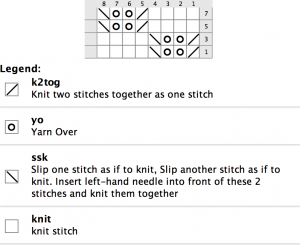
But how to adapt this stitch pattern to our canvas shown above?
First, we fill in the repeat as shown below.
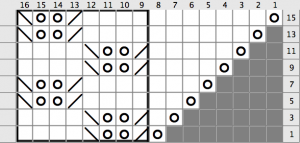
Now it’s time to adapt our stitch pattern to the right side of the repeat – the area still empty. The result is shown below.
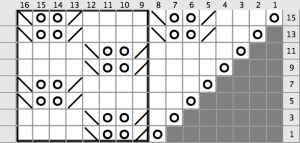
Now that we have worked everything out the lace section can be worked, an end found (like, add another two ridges of garter at the end) and then it’s time for weaving in ends and blocking. When all this is done we can take pictures and start writing the pattern!
The result is the 5000 Shawl Knitters pattern (available for free today if you’re a member of my Shawl Knitting Facebook group – if not, well, sorry ; maybe next time, when we hit 10K members!).
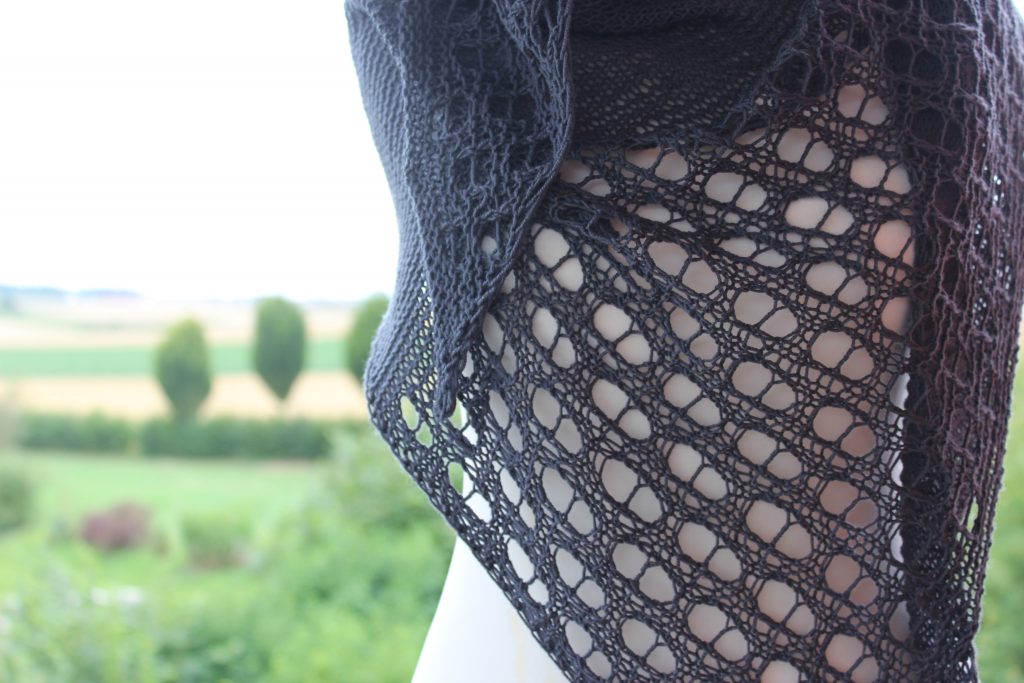
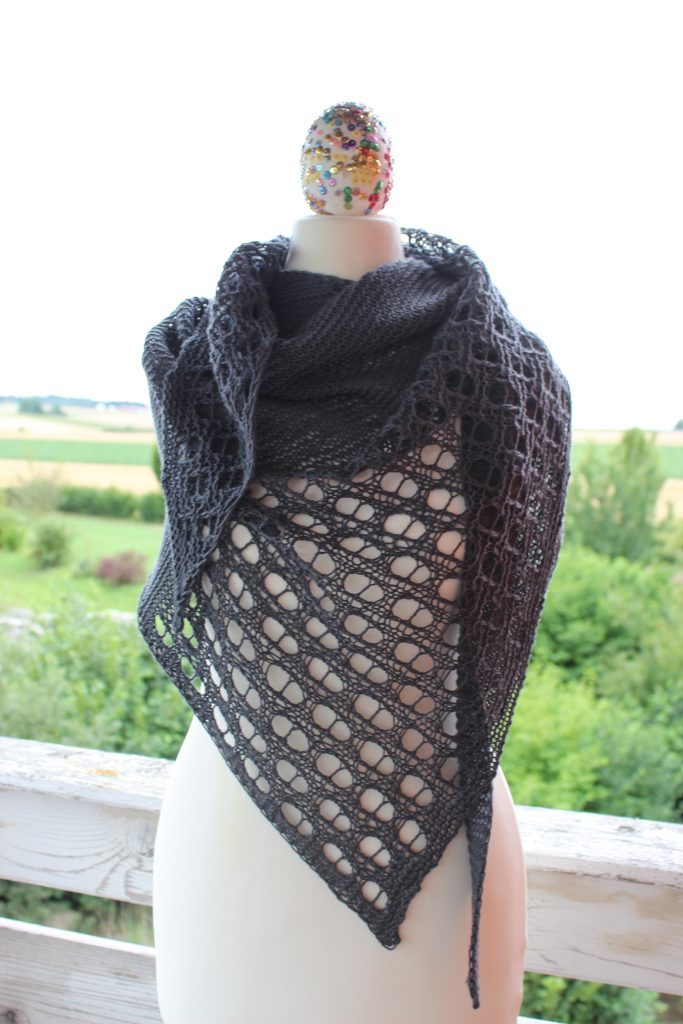
You can download the pattern here.
We’ll design from stash once a week from now on – see you next week!


Julia,
Thanks for the pattern!
My pleasure 🙂